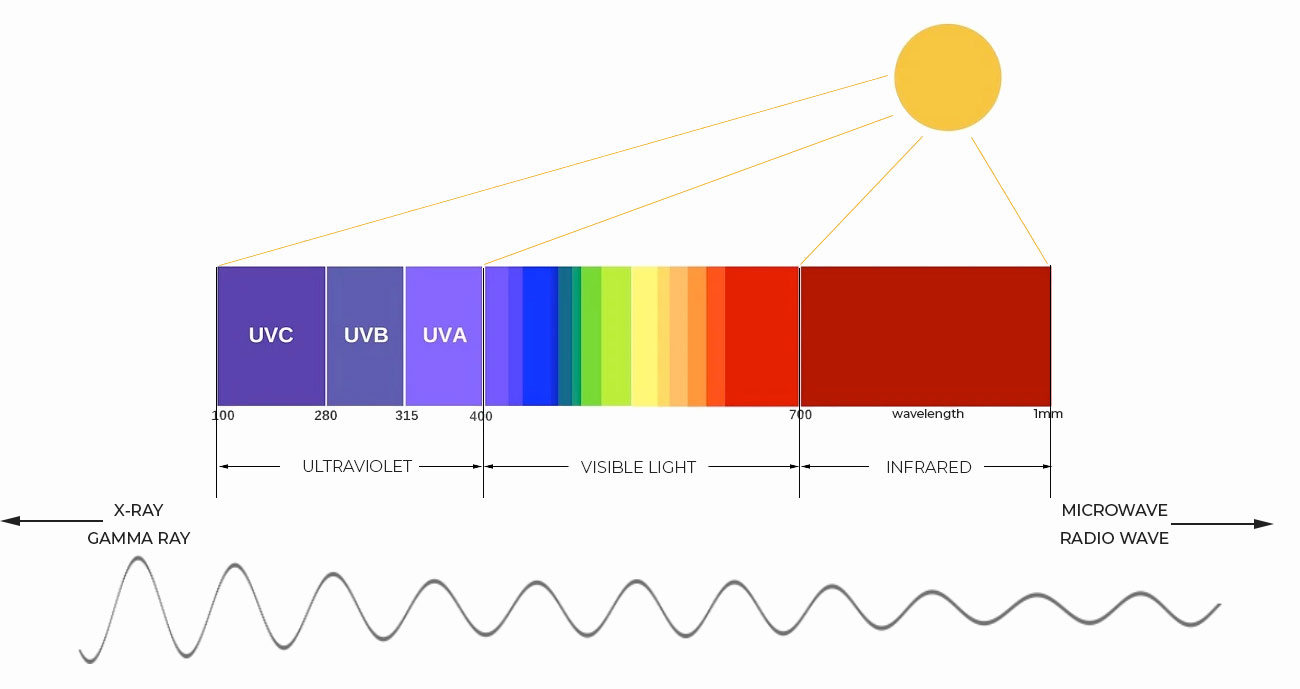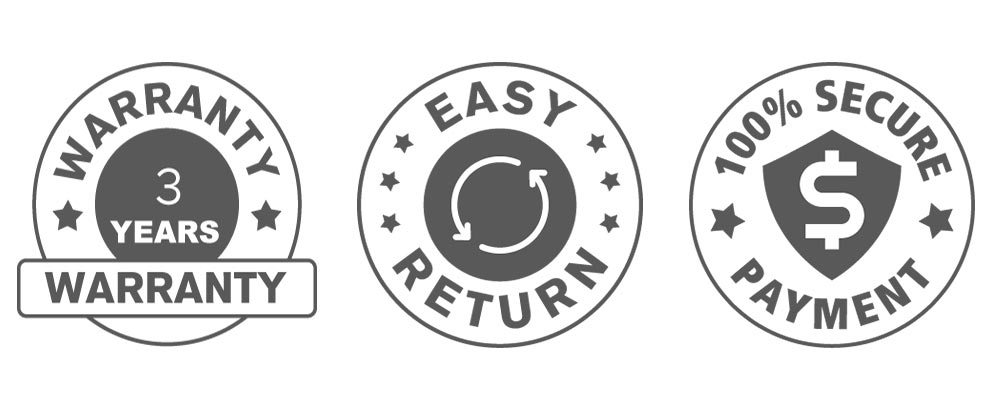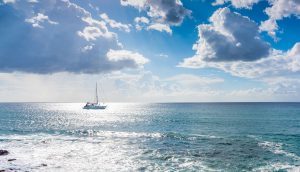UV, Visible Light & Infrared
Most of us are aware that the sun’s ultraviolet rays can damage the skin and lead to sunburn and skin cancer. It’s why we use sunscreen to block out these harmful rays. Although it is often referred to as UV light, this is a bit misleading as UV is invisible to the human eye so a better way to describe it is ‘UV radiation’.
For the same reasons that skin can be damaged by UV radiation (UV), the eyes can also be damaged by exposure to UV. It’s one of the reasons we wear sunglasses.
And then there’s “visible light” and “infrared light”. These should not be confused with UV. They occupy different places on the electromagnetic spectrum and have different frequencies and energies.
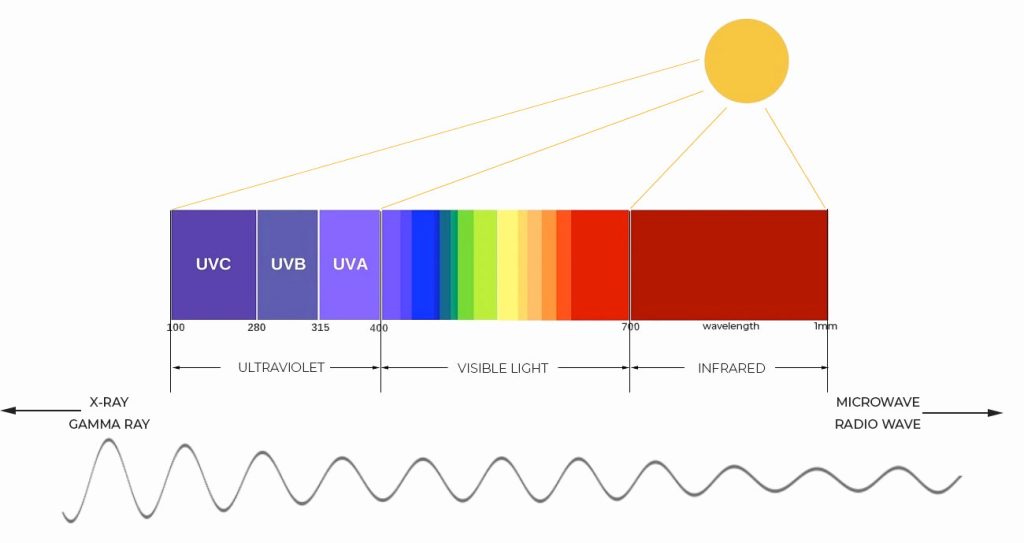
Neither UV or infrared can be detected by the human eye, but both have an effect on the body but in very different ways. While Infrared warms the body, it does not burn the skin (or damage the cornea). On the other hand, while UV does not warm the body, it does cause sunburn. It’s all down to the frequency and energy in the waves. The higher the frequency, the greater the energy and the potential to do harm.
UV has a higher frequency than visible light, which itself has a higher frequency than infrared. The human eye can only detect visible light which falls between 400-700 nanometres.
Visible Light Transmission (VLT)
When it comes to sunglasses, you may often see the term ‘visible light transmission’ or ‘VLT’. This relates only to the visible light that we can see in the 400-700 nanometre range.
So what is a VLT rate and what does it mean when it comes to choosing sunglasses? Simply put, the VLT rate is the degree of the lens tint – i.e. the amount (or percentage) of visible light that passes through the lens. The higher the VLT percentage, the lighter the lens tint will be (for example, lenses with a 9% VLT rate will be darker than lenses with a 15% VLT rate).
If you live in a bright and sunny environment, you will want a lens with a lower VLT rate but if you live in an area which is often cloudy, then it’s worth considering a lens with a higher VLT rate.
Fortunately, there is an established convention for categorising lenses according to their VLT rate which is shown in the table below.
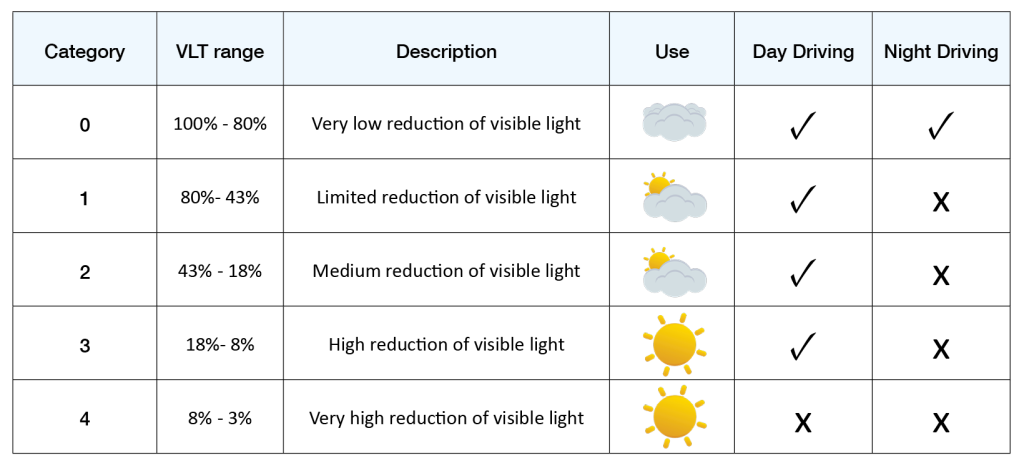
Tips to minimise exposure to UV radiation
Not all sunglasses lenses offer 100% UV protection. Check the product specification before you buy.
- UV reflects from surfaces like water, sand and snow, so if you’re in a highly reflective environment like this you’ll benefit from a wrap shape frame which minimises the amount of UV that can find its way into the eyes from the sides / top / bottom of the frame. Choose a frame that has a snug fit and larger lens size to keep out as much UV as you can.
- UV passes through clouds, so even if the sun goes in, you are still exposed to UV. Similarly, if you are in the shade (for example under an umbrella or awning), UV is still bouncing off surfaces. Wearing your sunglasses at these times will minimise your exposure.
- UV exposure is higher in the middle of the day. UV exposure is also higher in the tropics than in temperate zones. The closer to the equator the greater the exposure to UV. The incidence of UV also increases as you gain altitude.
- Solar radiation varies from day to day. Ozone depletion in addition to weather variations cause different amounts of UV radiation to reach the Earth. Keep an eye on the UV Index published by your national UV index and plan accordingly. For the USA – see the Environmental Protection Agency UV Index
The risk of damage to our eyes and skin from UV exposure is cumulative throughout our lifetime. Encourage friends and family to wear sunglasses from an early age.
